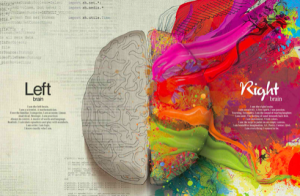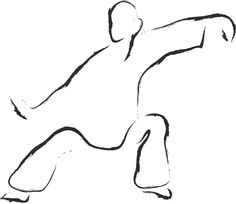Neurological Aspects of Immune Function
In the classic tradition of Western science it has been thought that the immune system was an autonomous self-regulating system, operating on its own. A tremendous amount of research has demonstrated that this view was incorrect. Mental emotional states have been found to effect resistance to disease and infection. (60) Immune organs including the thymus gland, spleen, lymph nodes and bone marrow are invested with nerve endings. (60) Lymphocytes and macrophages have been shown to have receptors for neurochemicals, including catacholamines, prostaglandins, serotonin and endorphin. (60) There is a definite relationship between brain and nervous system function and immune capability.
In the practice of Qigong and Yoga, as has been discussed, the hypothalamus regulates the autonomic nervous system function toward a lessening of the sympathetic activity, which is associated with the stress response. (3,57) A number of studies have demonstrated that the hypothalamus has an influence over immune function. (60) Meditation, progressive relaxation, deep breathing and slow relaxed movement all tend to move the practitioner out of the sympathetic state and induce the relaxation response. Research on the effect of relaxation and visualization sheds some light on the effect that the Qigong and Yoga states may have on immune function. Groups of elders who received relaxation training had significant increases in the activity of “natural killer cells” while control groups did not. Chinese research has corroborated the positive effect of Qigong practice on the status of the immune system. (65,69,70,71,72)
Brain Hemisphere Dominance
Thousands of years ago the oriental practitioners of self-care disciplines intuitively developed an awareness of an alternating cycle of the predominance of body activity from the right side of the body to the left side. One particular Qigong practice, Taiji, is founded on a constant, flowing of the limbs in circular motions, alternating from right to left. The side of the body that bears the weight is planted, stable, and associated with the Yin. The side that is free to move and kick is active and associated with the Yang. Constant alternations of right and left side activity are thought to balance the forces of Yin and Yang in the body. Focusing on the right and left sides alternatively activates, and reputedly balances, the right and left motor centers in the brain.
The channels or circuits that conduct the human resonating energy field, according to yogic medicine, are called nadis. Ida nadi and Pingala nadi associate with right and left brain activities. (72,73) In addition this association effects right and left nasal passage activity as well as the physiology of the right and left body. These channels alternate in their predominant activity over a 2-3 hour cycle causing the dominant nostril to be clear and the non-dominant nostril to swell and become congested. (73) This phenomenon was not noted in the Western world until 1889 when the German physician R. Kayser recorded his observation of the “nasal cycle.” (74) Much of the research on this phenomenon up through the 1980’s was motivated by the quest to develop pharmaceuticals for nasal congestion. (72)
It has been demonstrated that the nasal cycle is coupled with the alternating lateralization of cerebral hemispheric activity. (73) It was found with research subjects, that when a shift occurred in either nasal dominance or brain hemisphere dominance there was an associated shift, within moments, in the other as well. The right nasal cavity, associated with pingala nadi tends to be more open and the left more congested when the left hemisphere of the brain is more active. This is associated with the active phase of the BRAC and increased general sympathetic tone. (72) In contrast the right brain hemisphere is more active when the left nostril is open and dominant and the individual is in the resting phase of the BRAC or the parasympathetic mode.
A number of different physiological states have been found to be associated with the dominance of one or the other nostril.
Deep sleep is initiated more quickly with left nostril dominance.
Appetite and digestive ability are enhanced during right nostril dominance.
Sexual intercourse is most satisfying when the man is dominant in the right nostril and the woman in the left.
Left nostril, right brain dominance is more conducive to receiving new ideas, while right nostril, left brain dominance is an advantage during discourse.
It is possible to alter the pattern of “thought waves” by consciously alternating nasal dominance by exercising the congested nostril by forced nostril breathing. (75)
A specific Qigong and Yoga breath technique that has been practiced for centuries is the right and left singular nostril breathing. Dr. Sannahoff-Khalsa of the Salk Institute has done extensive research with this technique, originally prompted by his work with the Kundalini Yoga tradition. The studies done by him and his associates have shown that forcing the breath through the constricted nostril can increase the EEG amplitude of the contralateral hemisphere of the brain. (76) It has been demonstrated that certain psychopathologies are brain hemisphere specific. (77,78) It may be possible, therefore, that the use of single nostril breathing may be applicable as therapy in cases where lateralized dysfunction has been found.
There is a direct correlation between nasal dominance, brain dominance and the lateralized biochemical activity in the peripheral body parts. Recent studies of the nasal cycle comparing plasma catecholamine levels in the venous circulation of the right and left arms found that levels of norepinephrine alternated with the rhythm of sympathetic dominance of the nostrils. (79)


